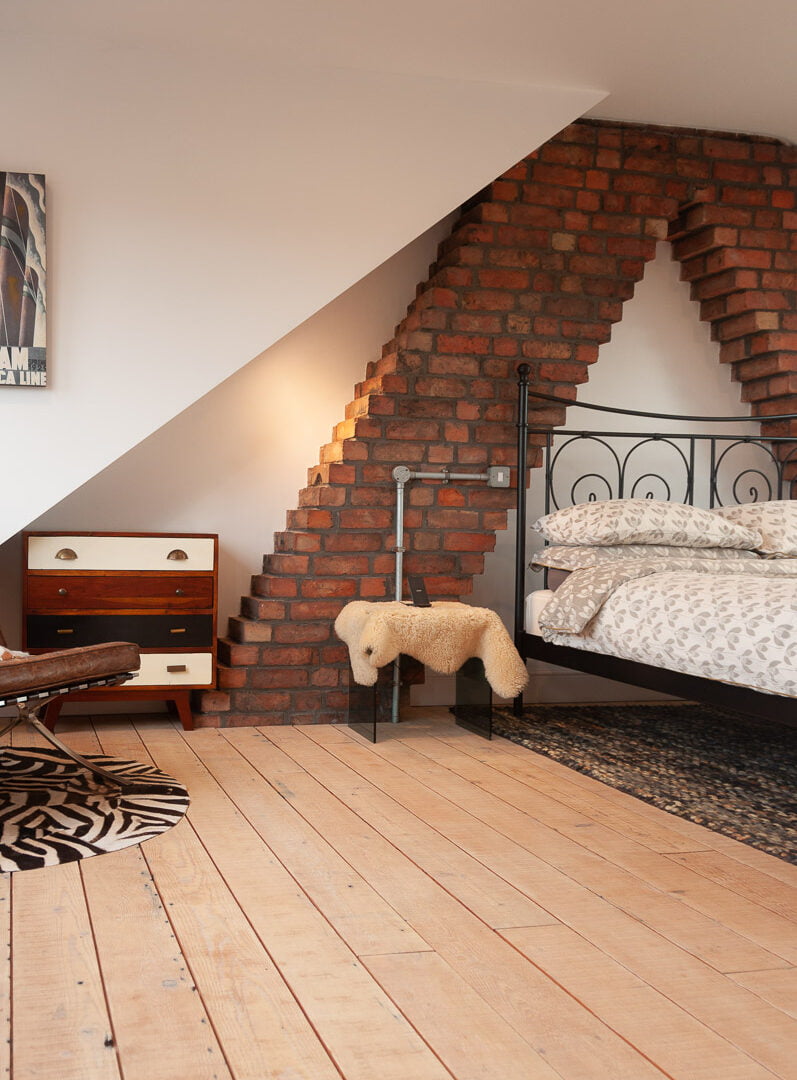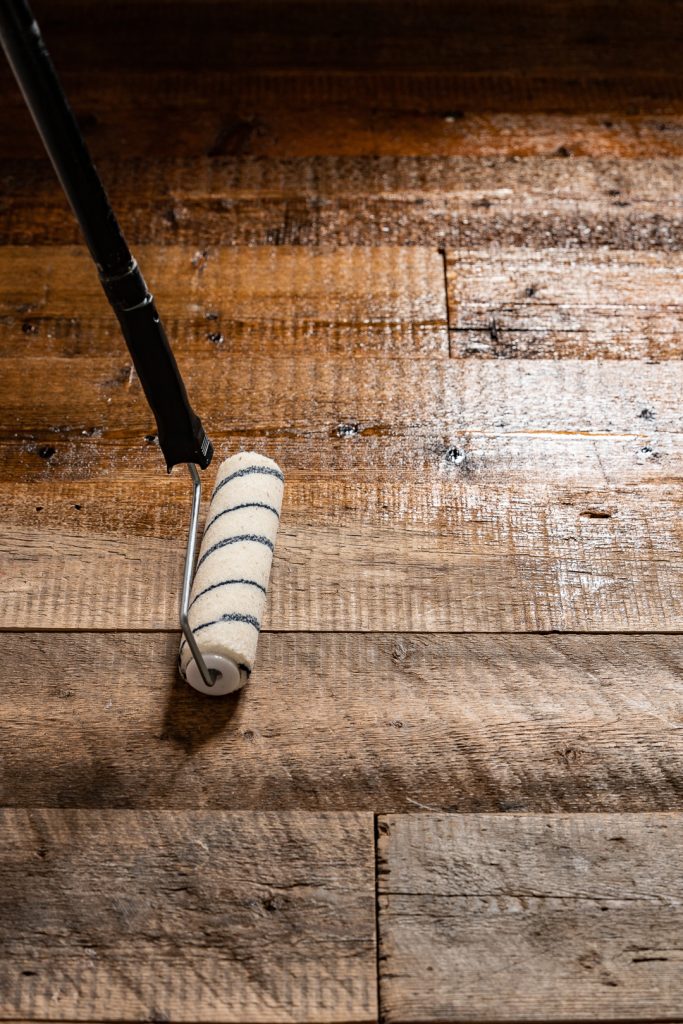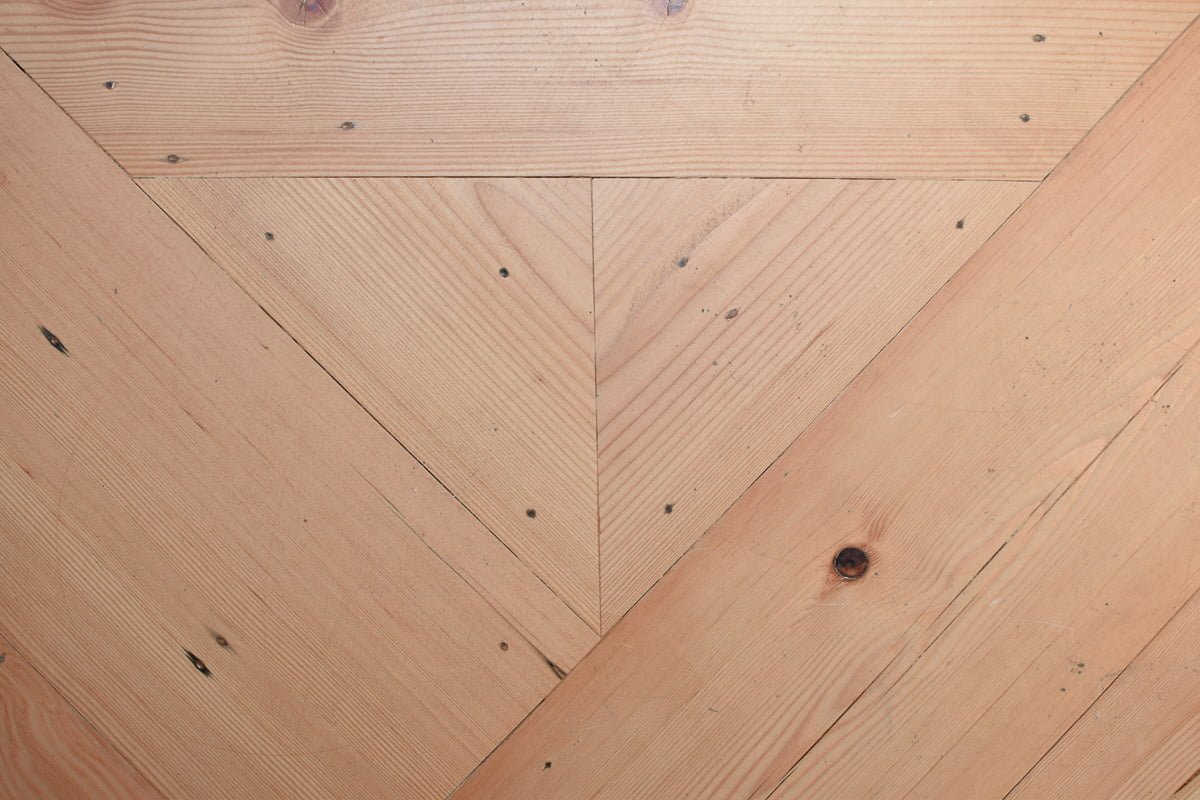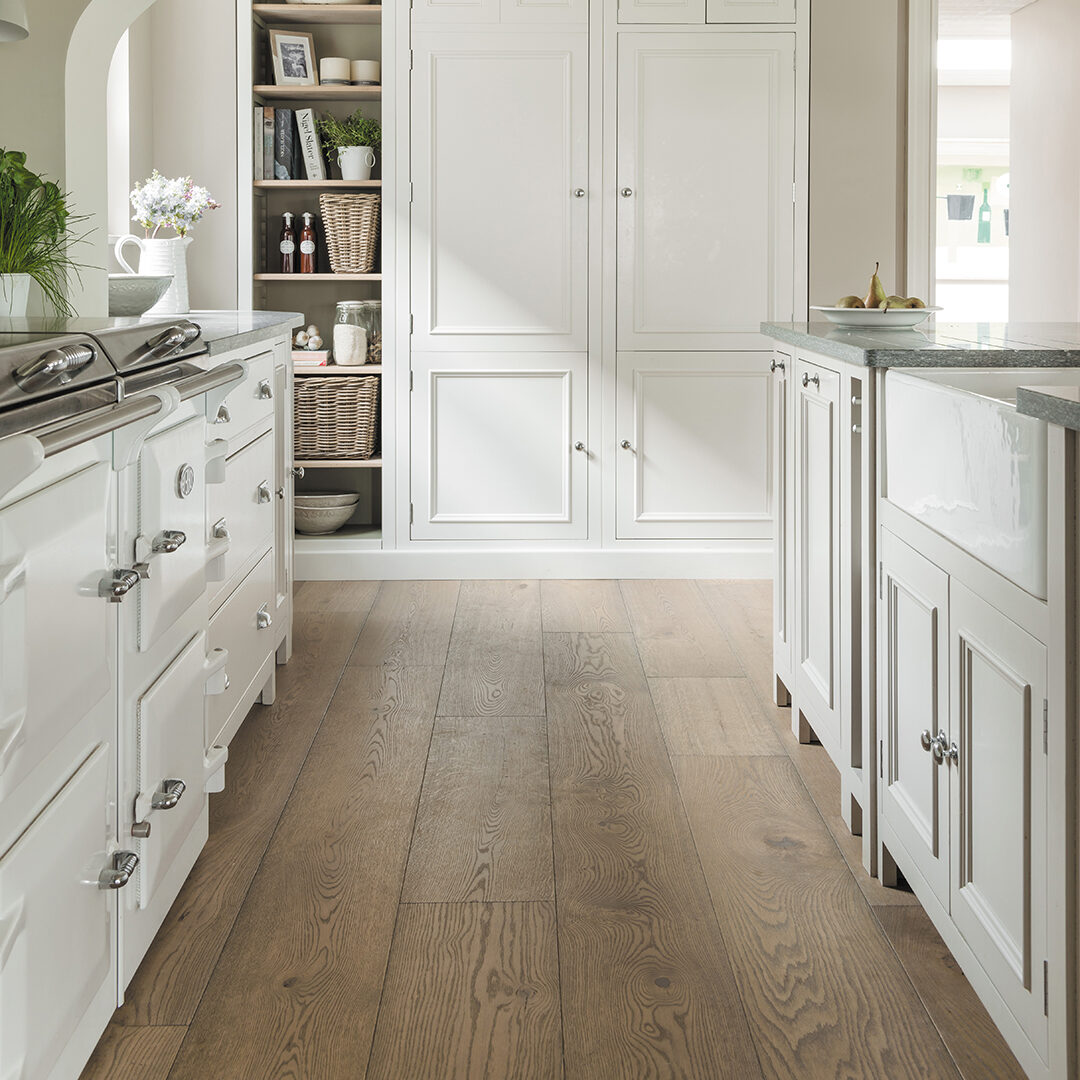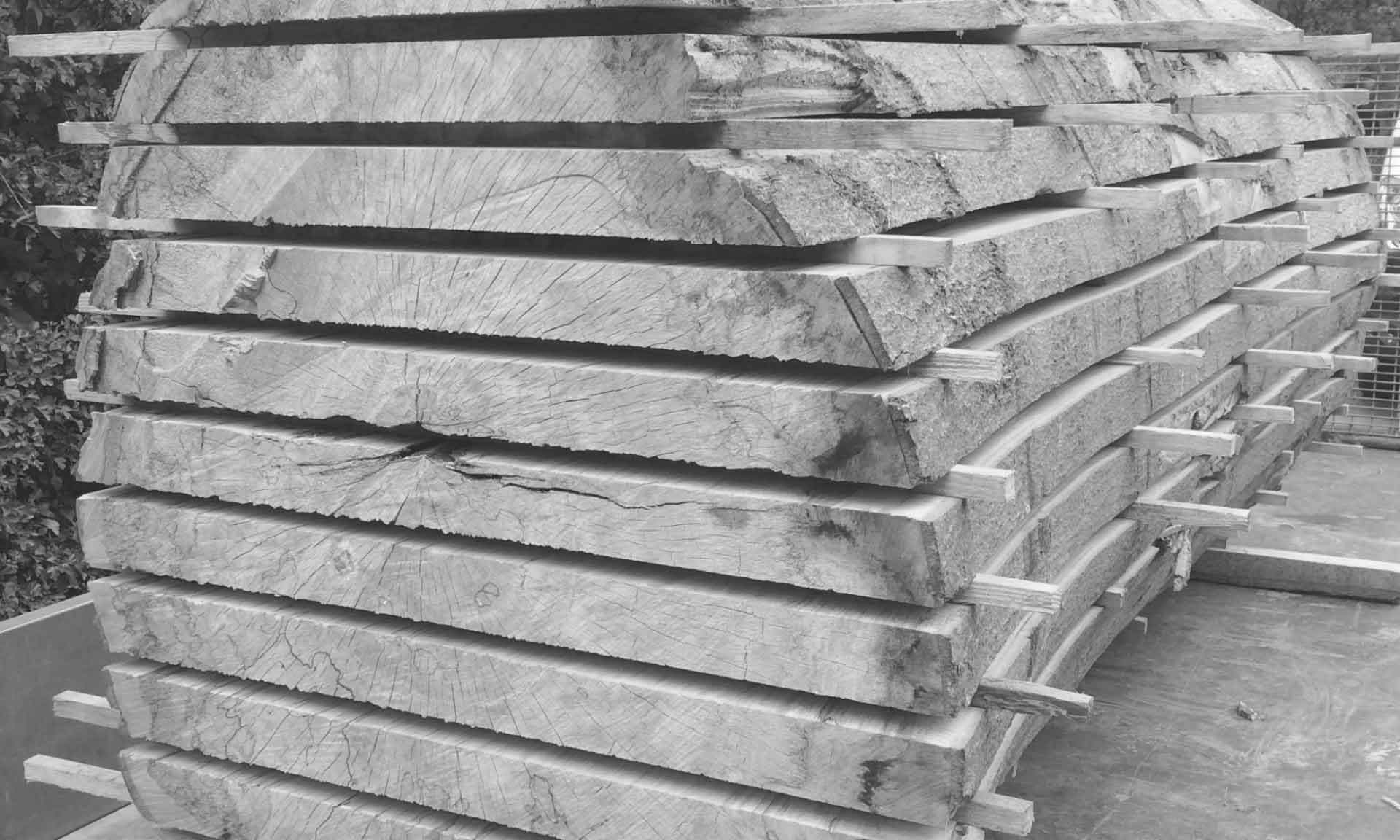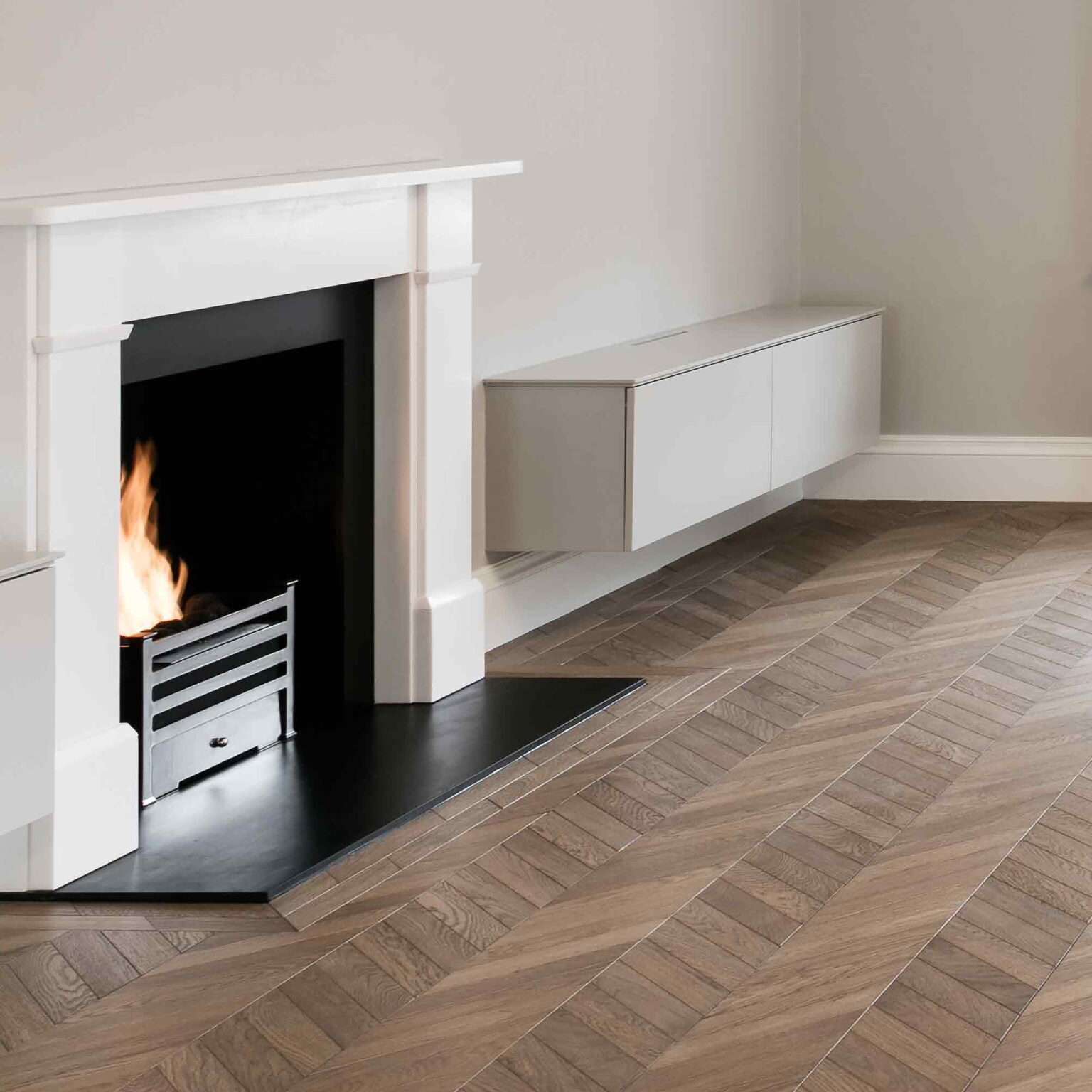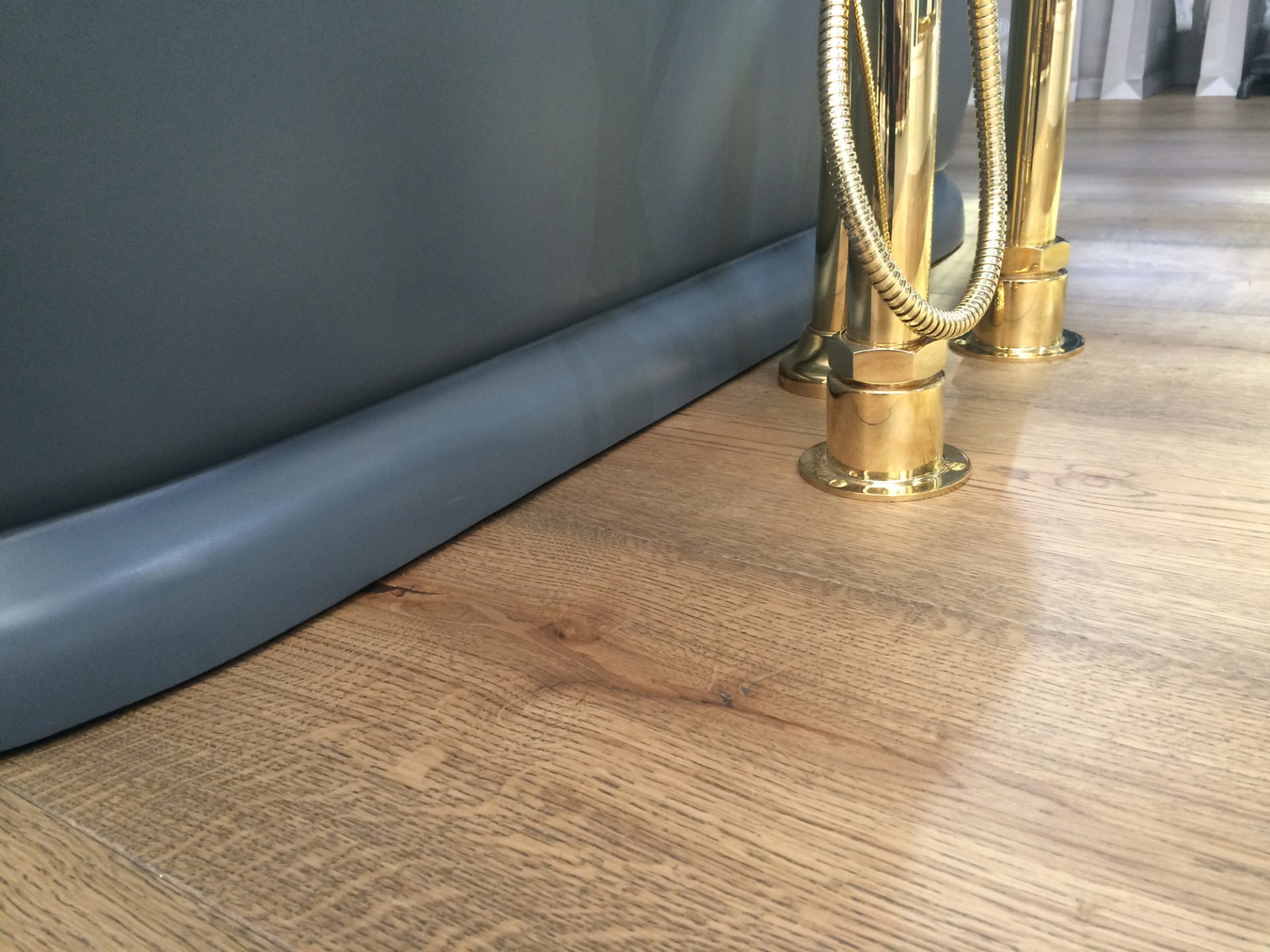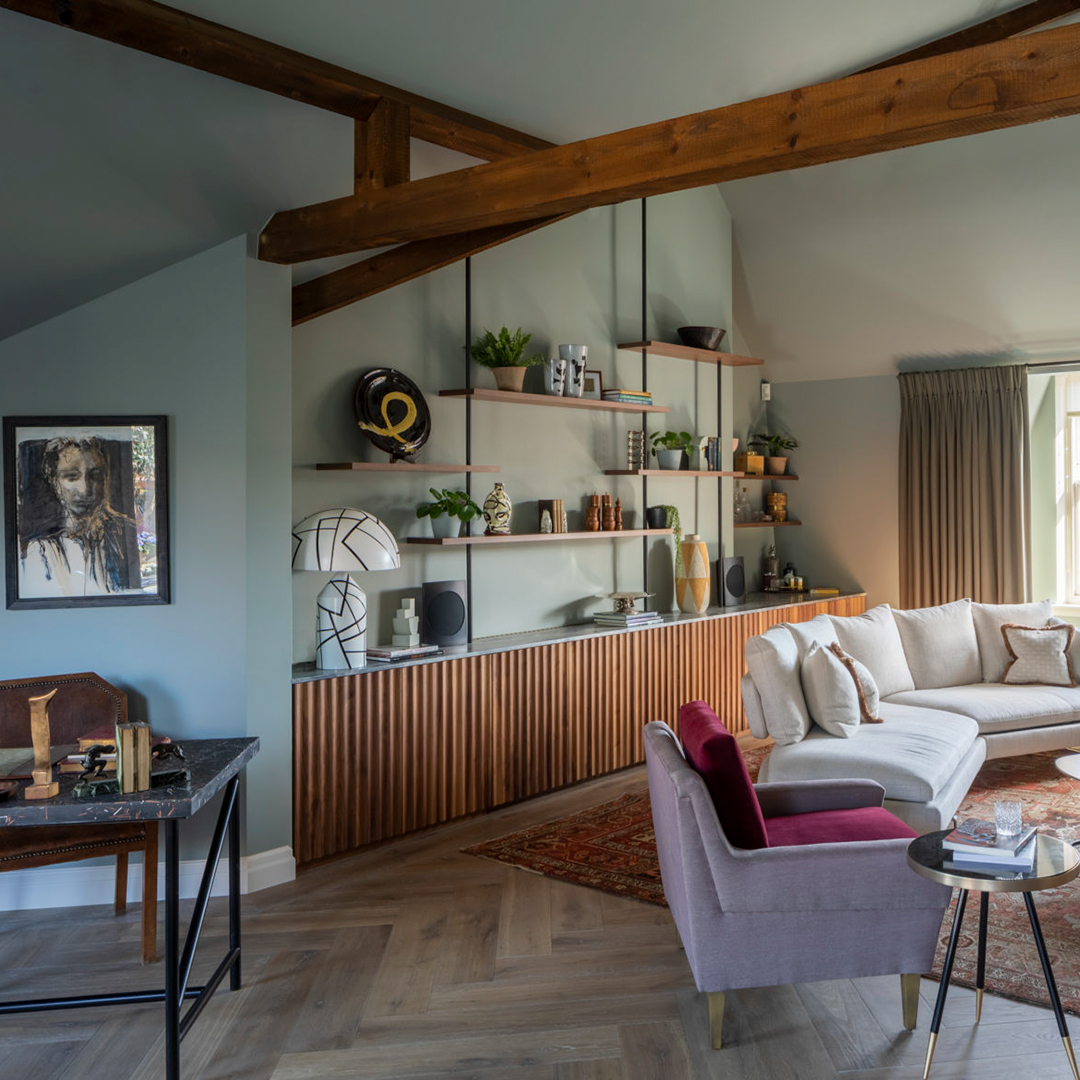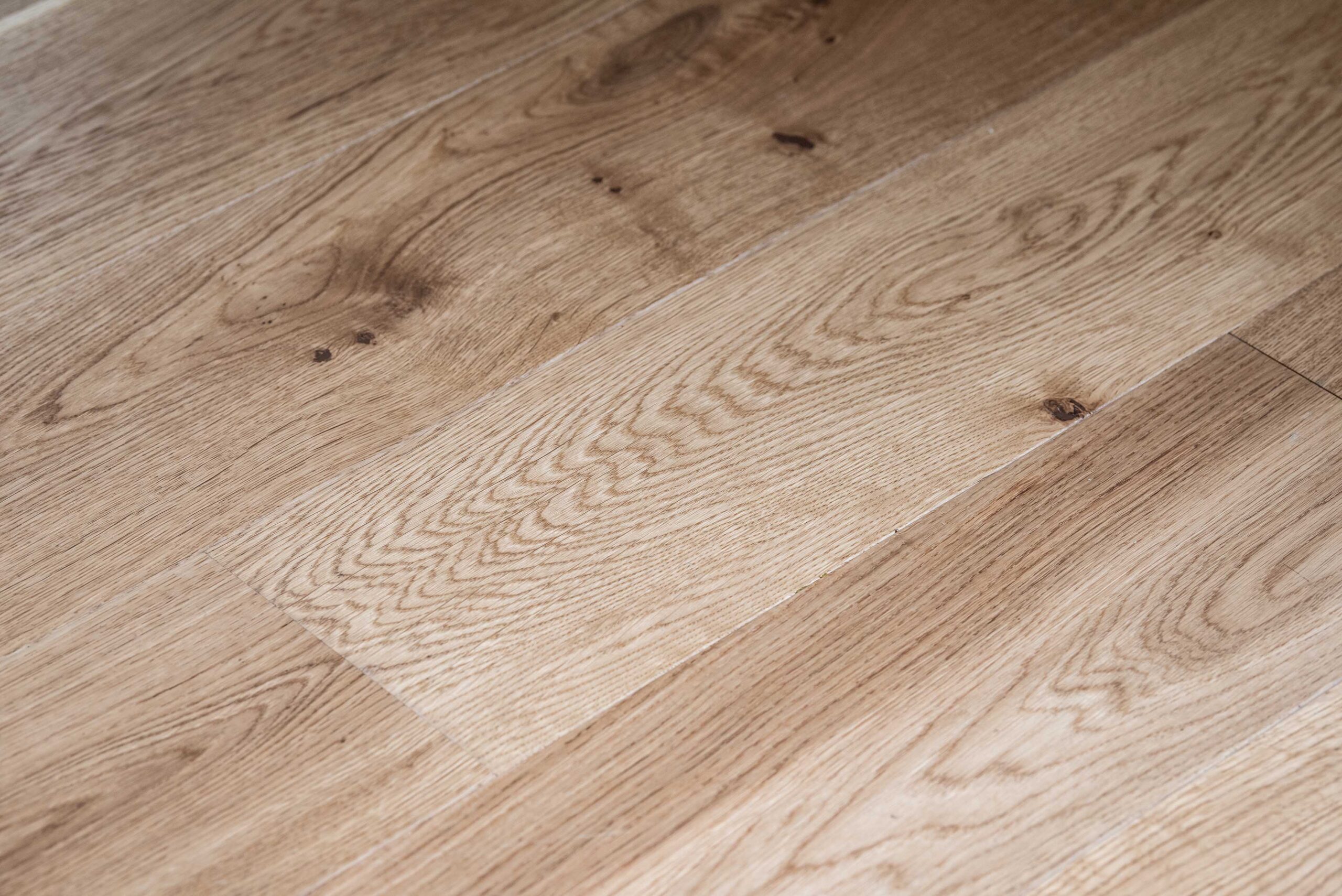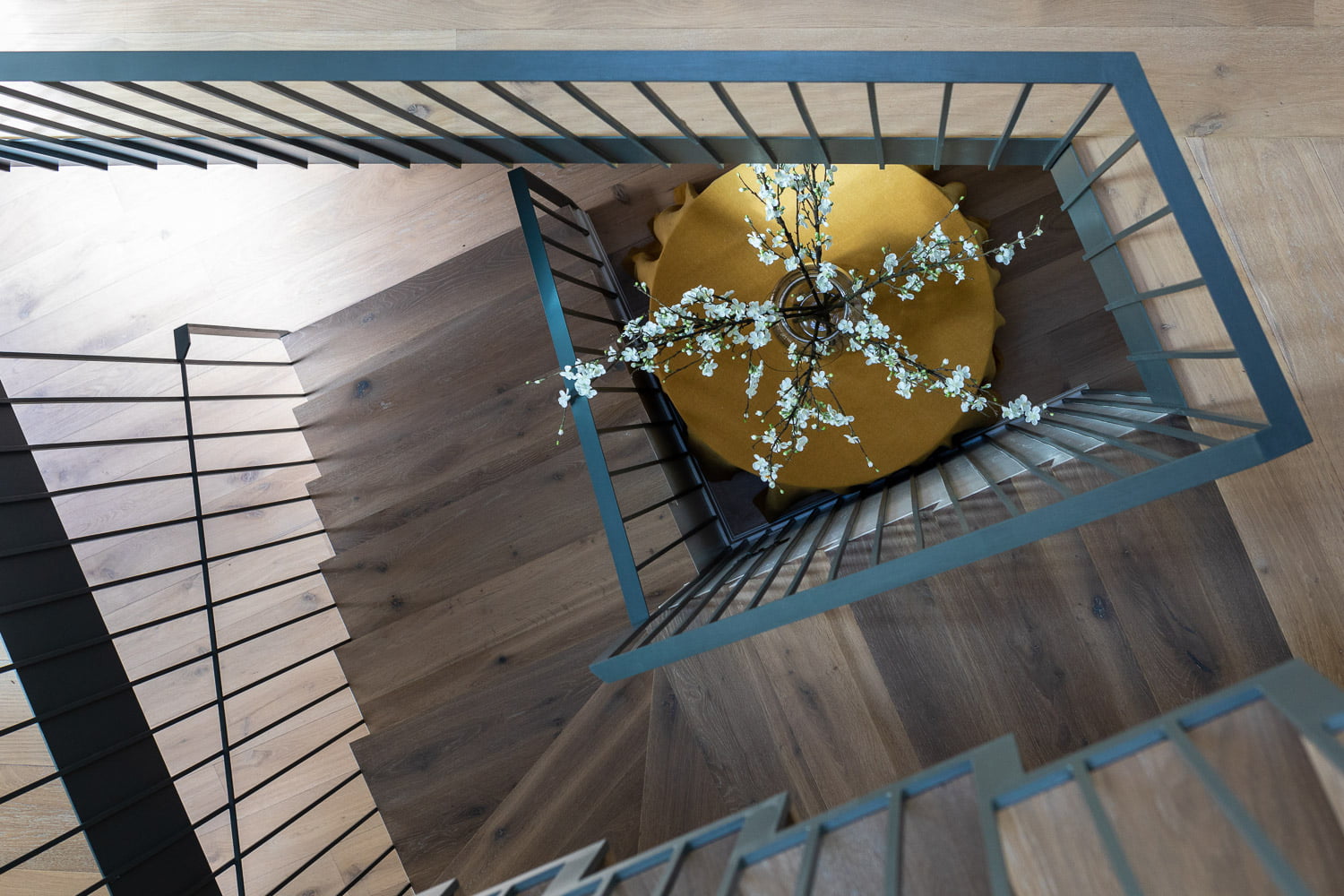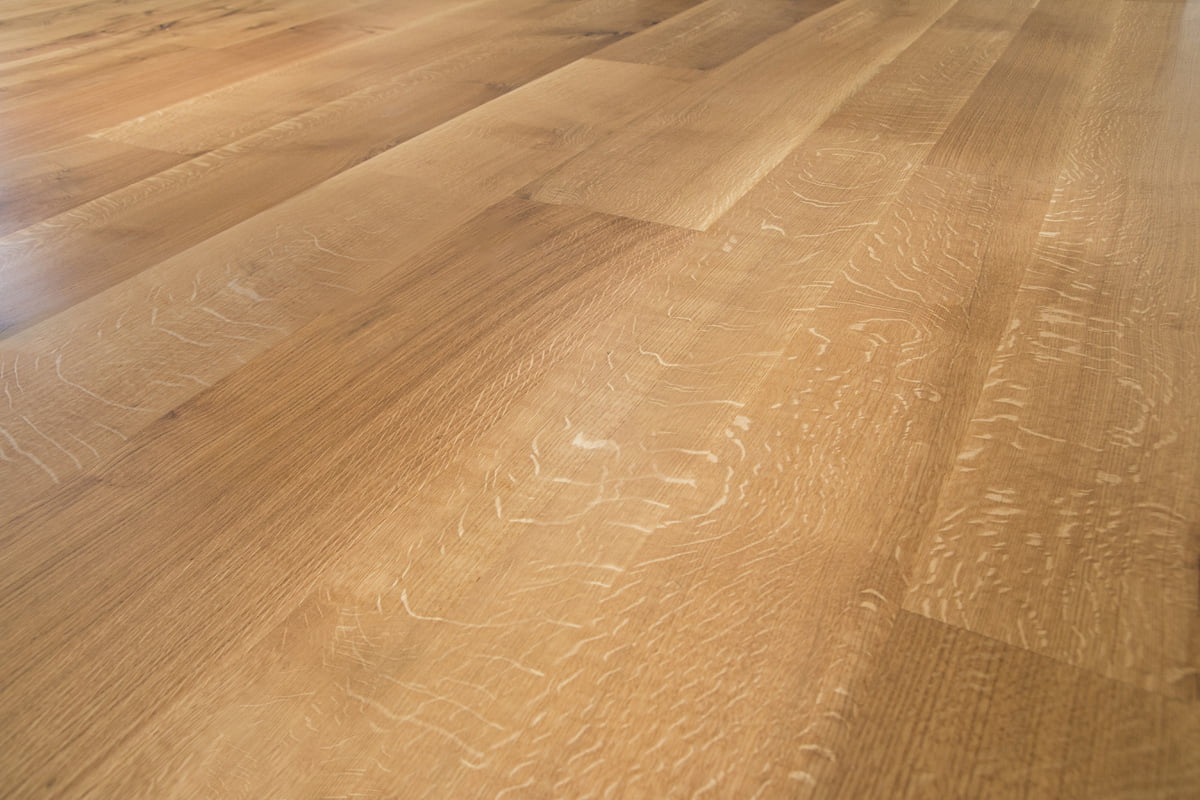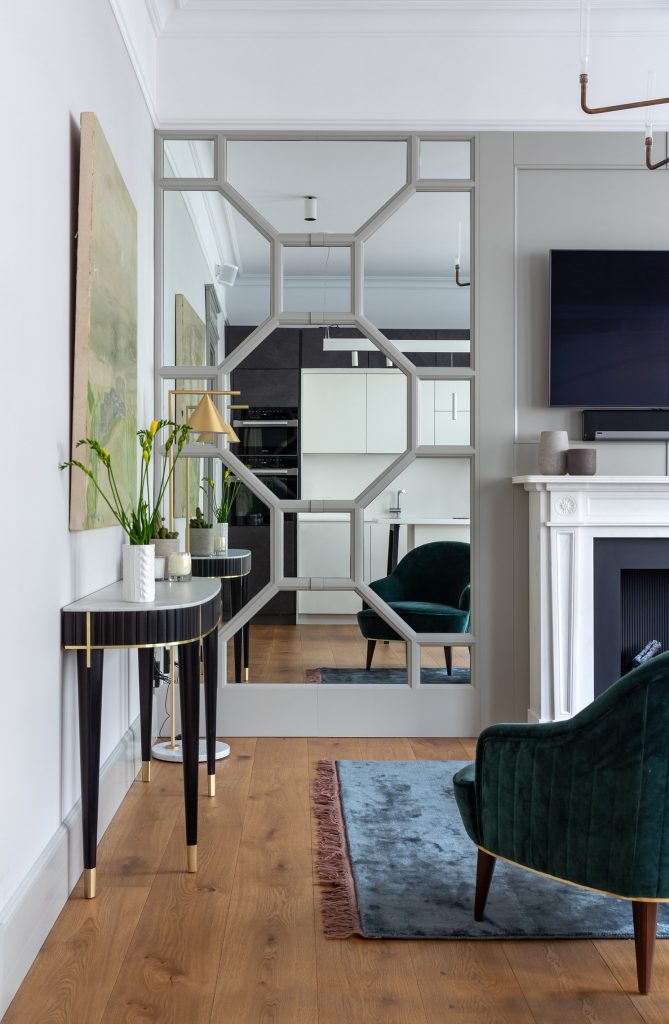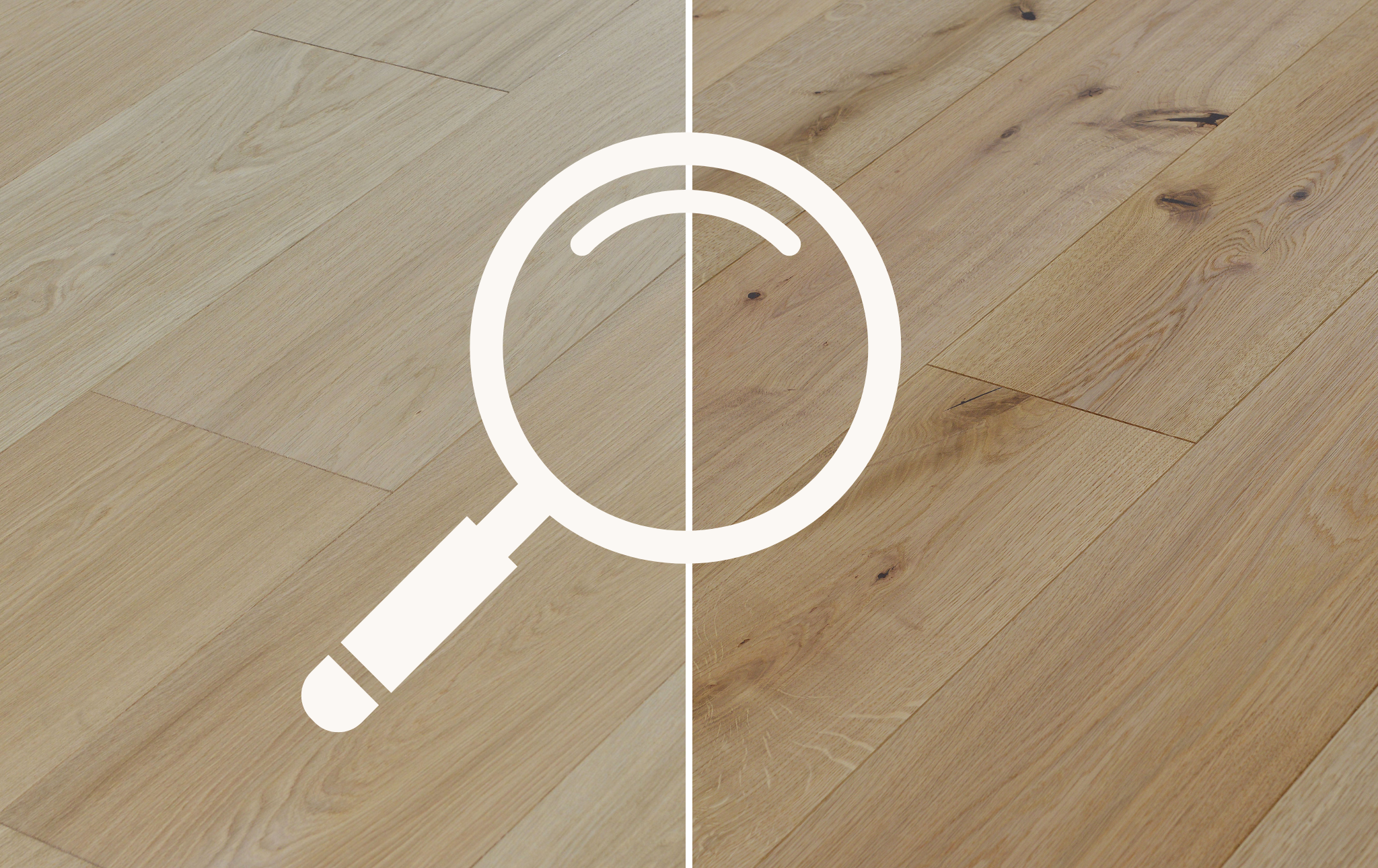Choosing Reclaimed Wood for Flooring

The Many Faces of Reclaimed Wood
From weathered, original-faced carriage oak and exotic hardwoods, to smooth planed, clean-looking softwoods – there are reclaimed boards out there to suit any interior design project.
However, not all our reclaimed timber lends itself to be used as flooring from the outset. For example, reclaimed railway carriage boards which have been rough sawn in half may not have a perfectly flat surface on the inside face, and its rustic time-worn face is unlikely to be suitable for most projects. Timber like this will require additional processing before it can be used as flooring.
Milling: Re-Shaping Reclaimed Wood
When we source our reclaimed timber, we can often select options for milling the timber depending on its intended purpose, including machining edge profiles to make them more usable for flooring. We’ve even supplied oak herringbone blocks crafted from reclaimed railway carriage oak – as pictured below at Channel 4’s Creative Hub in Bristol.
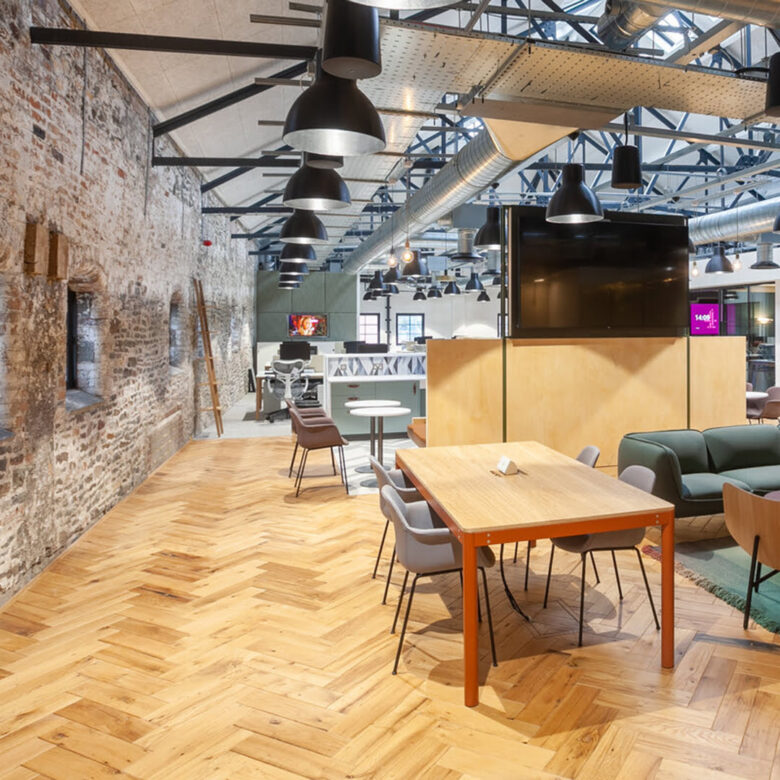
Reclaimed Plank Thickness
Some reclaimed planks may be too thick or too thin to be viable for flooring, or can even vary from one end of a plank to the other. Reclaimed planks for flooring need to be planed to achieve even thickness along the board.
The thickness of plank you need will depend on the subfloor which you’re fitting onto. For example, if you’re fitting directly to joists, you’ll need planks which are a minimum of 18mm thick.

For planks to be suitable for flooring, they will need to be same thickness throughout the batch, allowing the planks to sit as flat as possible. In most cases, square edged reclaimed timber like this will still need to be sanded on site to remove any lips – and then sealed on site. Otherwise, your floor may have lips where the boards don’t sit flush, which can be a toe-stubbing trip hazard.
Reclaimed but Refined: Stripped Back Planks
Four-Sides-Planed Timber
Most of our reclaimed flooring planks are planed on four sides for a traditional, stripped back look as you will find in our Victorian Collection. These products make for ideal flooring for Victorian era properties, and where a traditional look is required.
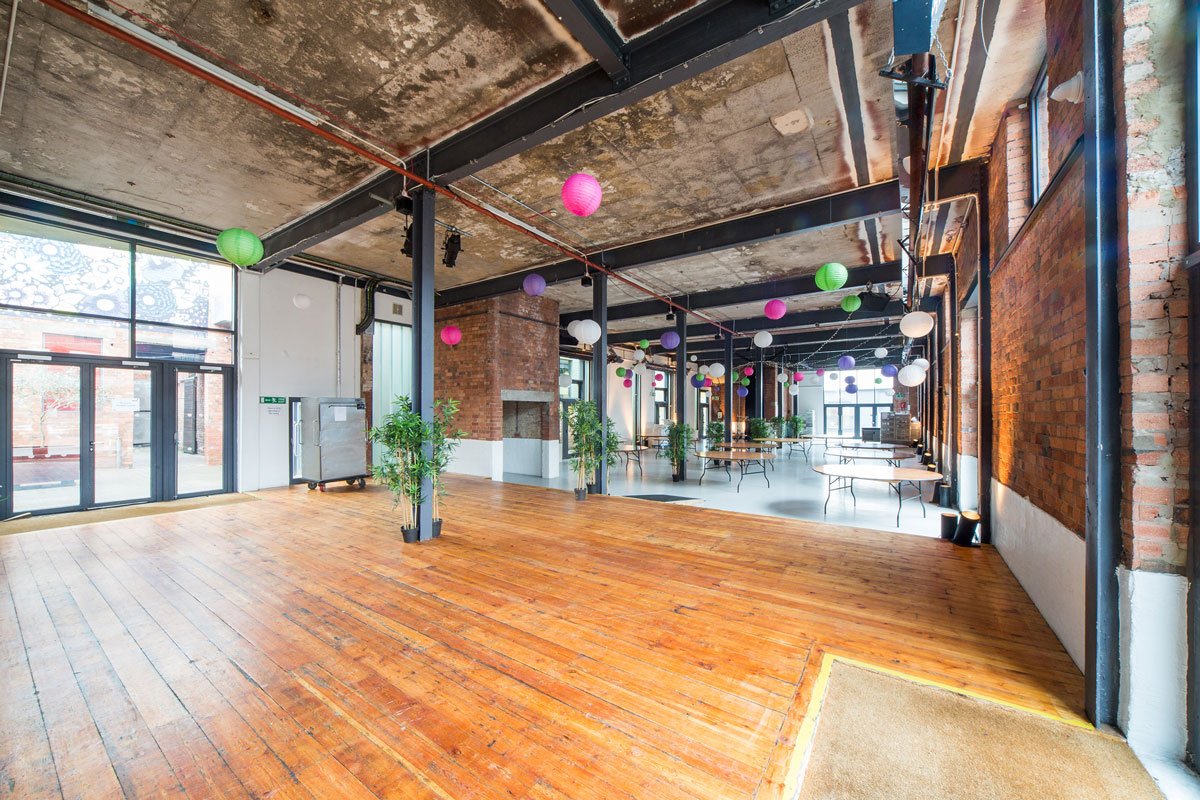
Refined yet characterful historic oak timber flooring, such as our Victorian Beam Oak, is supplied surfaced and regularised to load-bearing thickness and has a tongue and groove profile, making it perfect for flooring.
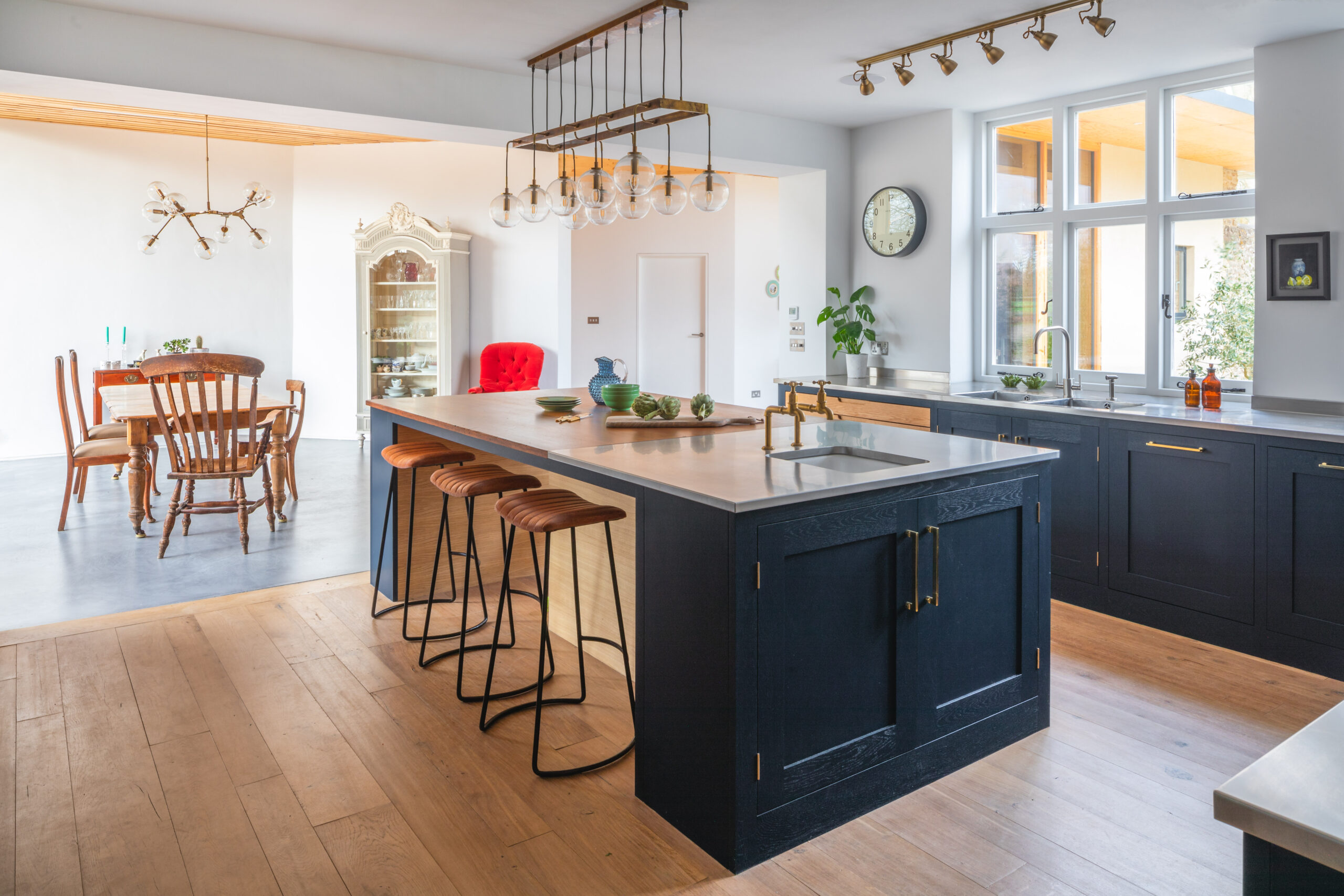
About Reclaimed Flooring Edge Profiles
Square Edge (S.E.)
Most three-sides-planed or four-sides-planed reclaimed timber boards can be supplied with a square edge. They are either planed or cut with a straight-line rip saw to create a perfectly square, smooth edge which allows the boards to be installed neatly side by side, running parellel.
These can be face-nailed directly to joists or you can fully bond the planks to a concrete subfloor; however, you will need to carefully weigh down the boards to ensure a successful bond is achieved with the adhesive, which can be tricky.

Tongue & Groove (T&G)
Batches of reclaimed wood can often be supplied with a tongue and groove profile machined into them, making them ideal for flooring.
You can fully bond these planks to a concrete subfloor, or secret screw through the tongue of the board into joists or a plywood subfloor.

Shiplap (half lap)
Some planks feature a shiplap edge profile, designed to simply overlap other boards at the edges, which can work for flooring too, with boards face-nailed to joists.
The rustic, eye-catching texture of our reclaimed Shiplap Sawn Pine boards can create wood flooring with a charming coastal aesthetic.

Want to Preserve the Original Face?
Carriage Boards & One-Side-Planed Timber
Some of our reclaimed boards are stocked as full thickness carriage boards (the boards can be used to produce a variety of reclaimed cladding and flooring products), and some have just one smooth surface, with the original edges and the outside face preserved.

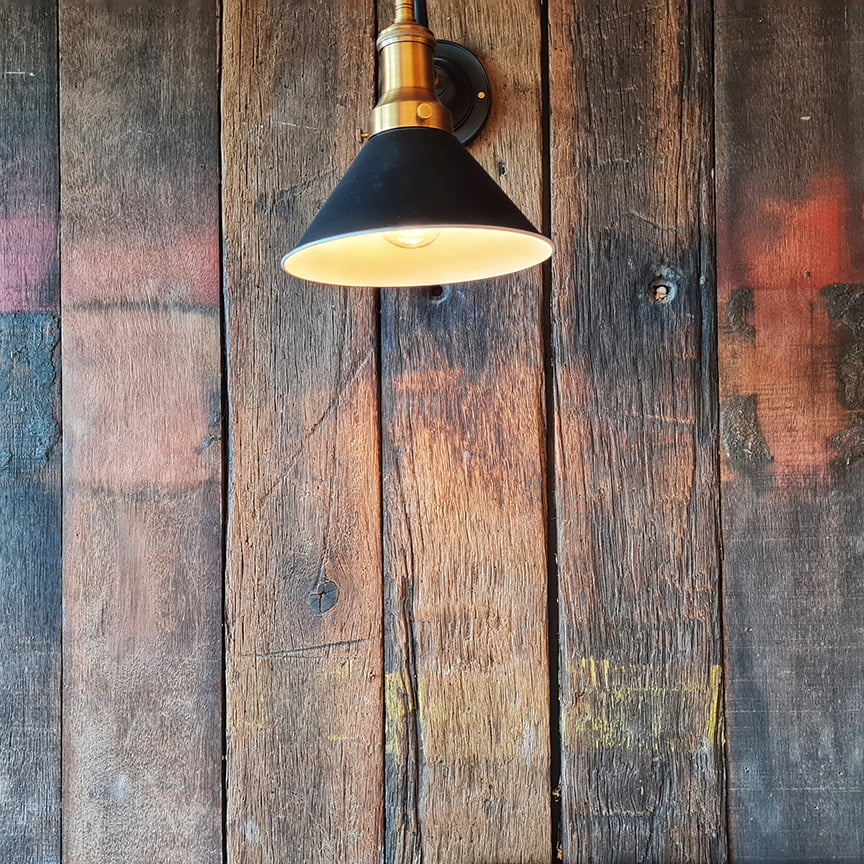
As the original edges on these boards may be very uneven, they are a better option for cladding. They would need extra processing to make them into a suitable floorboard.
Three-Sides-Planed Reclaimed Timber
If you want a rustic floor which makes a feature of the original face of the reclaimed timber, you can select a board which is surfaced on three sides.
Our Malbec Oak and Pinot Oak are great examples of this. They are reclaimed carriage oak boards which has been carefully processed, making them refined enough to use as flooring whilst preserving the character of the timber’s original face.
Another good example is our Warehouse Roof Pine. These planks can be used as flooring; however, it won’t suit every project and will require skill in fitting. You will need to be selective when fitting, as planks will likely have varying aesthetics, thicknesses and imperfections.
These original-faced planks can be carefully wire-brushed to remove some of the splintering fibres, and make them more suitable surface without losing too much of their character. This can be a charming option for the right type of property.
A Labour of Love
Transforming salvaged timber to create one-of-a-kind flooring is often a labour of love, but the results can be astounding.
It’s worth noting that, depending on the product you choose, it can require some extra skill and time in crafting the timber when compared to fitting modern engineered hardwood flooring. It will also usually require a higher percentage of wastage to be included in your order due to the natural variations and imperfections in the material.
It’s likely you’ll need to square the ends of each board, and, if you’re cutting boards to fit to joists, that’s going to increase the wastage factor.
Acclimatisation of Reclaimed Wood Flooring
Unlike our extremely stable engineered planks, solid reclaimed boards are sensitive to changes in moisture content, and they have a tendency to expand and contract when there are changes in environmental conditions. For this reason, you should allow approximately 3 weeks in suitable conditions (with consistent temperature and relative humidity) for your reclaimed boards to become as stable as possible before installing them. Make your rescued boards feel at home.
Limitations: Underfloor Heating
We strongly advise against installing solid wood planks over underfloor heating. Solid reclaimed wood planks are much more susceptible to unwanted movement: they can warp, cup, or buckle when there are any significant temperature changes. This will never stop, no matter how old the timber is.
Changes in moisture content due to the continually changing temperatures delivered by underfloor heating systems will likely make solid floorboards expand and contract at unacceptable levels. This movement puts a lot of stress on the flooring and can damage it.
Come and See Our Reclaimed Stock
Interested in creating a reclaimed timber floor? Book a showroom visit and see all available options.

